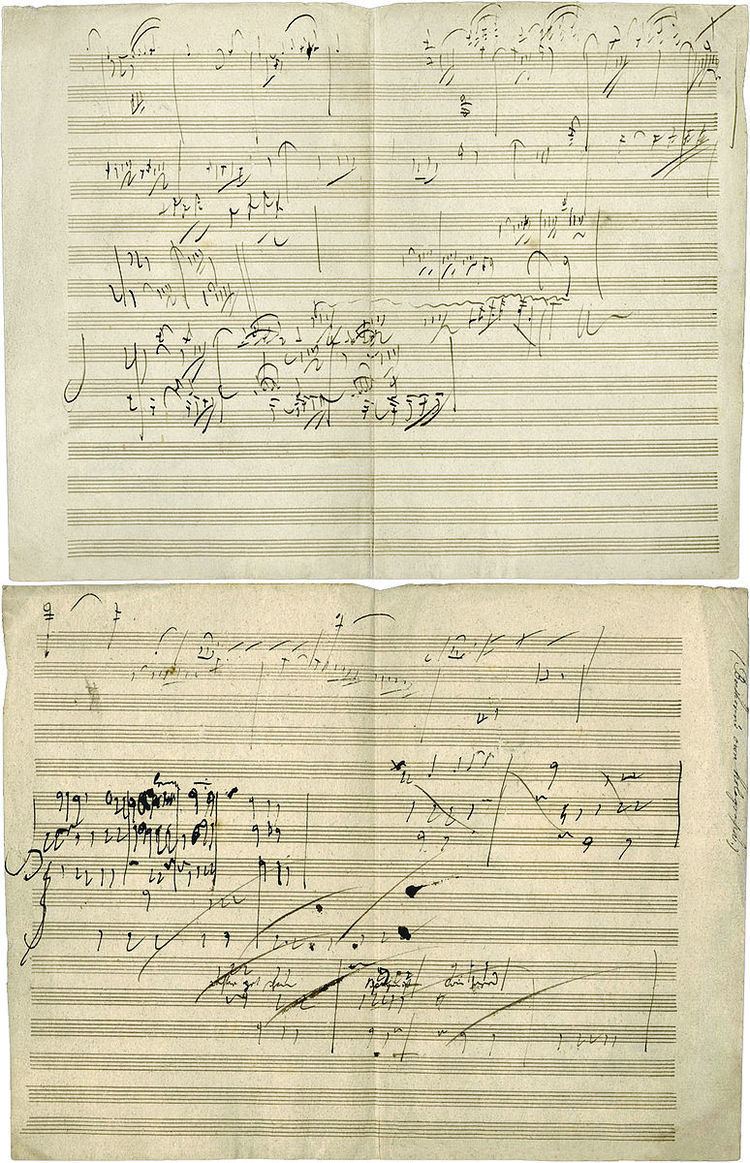Medieval c. 500–1400 Baroque Romantic c. 1780–1910 | Renaissance c. 1400–1600 Classical c. 1730–1820 Impressionist c. 1875–1925 | |
 | ||
Art music (also known as Western classical music, cultivated music, serious music, canonic music, or more flippantly, "real music" and "normal music") is an umbrella term that refers to musical traditions, implying advanced structural and theoretical considerations and a written musical tradition. The main tradition in the Western world is usually called classical music. "Serious" or "cultivated" music are terms frequently used as a contrast for ordinary, everyday music (popular and folk music, also called "vernacular music"). After the 20th century, art music was divided into two extensions: "serious music" and "light music".
Contents
Definition
This term is mostly used to refer to music descending from the tradition of Western classical music. This is the common definition referred by many musicologists and scholars. Many of these authors, however, tend to be critical or prudent with respect to certain implications of this classification. Those authors most particularly associated with critical musicology movement and popular music studies like Philip Tagg tend to reject latent social elitism that has sometimes been associated with this classification.
Tagg refers to it as one of an "axiomatic triangle consisting of 'folk', 'art' and 'popular' musics." He explains that each of these three is distinguishable from the others according to certain criteria. Some other authors interested in music theory may define art music differently. Musician Catherine Schmidt-Jones for example defines art music as "a music which requires significantly more work by the listener to fully appreciate than is typical of popular music." In her view, "[t]his can include the more challenging types of jazz and rock music, as well as Classical."
While often used to refer primarily to Western historical classical music, the term may refer to:
Characteristics
The term refers primarily to classical traditions (including contemporary as well as historical classical music forms) that focus on formal styles, invite technical and detailed deconstruction and criticism, and demand focused attention from the listener. In strict western practice, art music is considered primarily a written musical tradition, preserved in some form of music notation, as opposed to being transmitted orally, by rote, or in recordings (like popular and traditional music).
Popular music
There have been continual attempts throughout the history of popular music to make a claim for itself as art rather than as popular culture, and a number of music styles that were previously understood as "popular music" have since been categorized in the art or classical category. According to the academic Tim Wall, the most significant example of the struggle between Tin Pan Alley, African American, vernacular and art discourses was in jazz. As early as the 1930s, artists attempted to cultivate ideas of "symphonic jazz", taking it away from its perceived vernacular and black American roots. Following these developments, histories of popular music tend to marginalize jazz, partly because the reformulation of jazz in the art discourse has been so successful that many people today will not consider it a form of popular music.
In the second half of the 20th century, there was a large-scale trend in American culture in which the boundaries between art and pop music became increasingly blurred. Beginning in 1966, the degree of social and artistic dialogue among rock musicians dramatically accelerated for bands who fused elements of composed music with the oral musical traditions of rock. During the late 1960s and 1970s, progressive rock bands represented a form of crossover music that combined rock with high art musical forms either through quotation, illusion, or imitation. Progressive music may be equated with explicit references to aspects of art music, sometimes resulting in the reification of rock as art music.
While progressive rock is often cited for its merging of high culture and low culture, few artists incorporated literal classical themes in their work to any great degree, as author Kevin Holm-Hudson explains: "sometimes progressive rock fails to integrate classical sources ... [it] moves continuously between explicit and implicit references to genres and strategies derived not only from European art music, but other cultural domains (such as East Indian, Celtic, folk, and African) and hence involves a continuous aesthetic movement between formalism and eclecticism."
